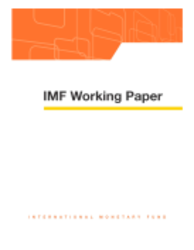
Reconciling Stability and Growth : Smart Pacts and Structural Reforms
This paper analyzes the decision of a government facing electoral uncertainty to implement structural reforms in the presence of fiscal restraints similar to the Stability and Growth Pact. The model shows that a pact may harm structural reforms, sacrificing future growth for present stability. The welfare gains brought about by a pact depend on a trade-off between the reduction in the deficit bias and the induced reduction in the amount of structural reform. A pact becomes more attractive ("smarter") if it takes into account the fiscal impact of structural reforms, in line with a recent proposal by the European Commission.
Publication date: September 2003
ISBN: 9781451858716
$15.00
Add to Cart by clicking price of the language and format you'd like to purchase
Available Languages and Formats
| English |
Prices in red indicate formats that are not yet available but are forthcoming.
Topics covered in this book
This title contains information about the following subjects.
Click on a subject if you would like to see other titles with the same subjects.
Labor , Labor , Economics- Macroeconomics , Economics- Macroeconomics , Structural reforms , Stability and Growth Pact , Monetary Union , Sanctions , unemployment , employment , employment protection , fiscal policy , fiscal rules , International Monetary Arrangements and Institutions , Monetary Union and Sanctions
Also of interest
Summary
Copyright © 2010 - 2025
Powered by:
AIDC



